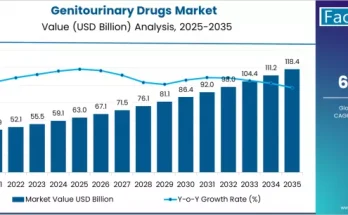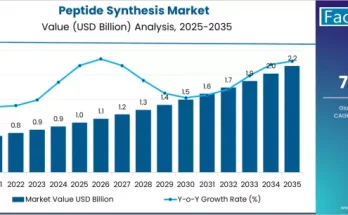The global Measles, Mumps, Rubella (MMR) vaccine market is entering a phase of accelerated growth as public health authorities, governments, and international health organizations intensify vaccination campaigns to curb the resurgence of preventable childhood diseases. With measles outbreaks rising in several regions and public health agencies reinforcing the importance of routine immunization, the demand for safe and effective MMR vaccines is expected to expand significantly across both developed and emerging economies.
In 2025, the global MMR vaccine market is valued at an estimated multi-billion-dollar level, with strong growth projected through 2035. Increased awareness, rising government funding, robust supply-chain reinforcement, and heightened global focus on disease elimination are set to fuel market expansion. The market continues to be dominated by a few leading pharmaceutical manufacturers, with new entrants exploring innovative vaccine platforms, combination formulations, and improved temperature-stable solutions.
Market Overview (2025 Baseline)
-
Market Status (2025): Strong growth trajectory driven by aggressive immunization drives
-
Primary End Users: Hospitals, pediatric clinics, public healthcare programs, and governmental vaccination initiatives
-
Key Regions Driving Growth: North America, Europe, and Asia-Pacific, followed by high-population emerging markets
-
Primary Distribution Channels: Government procurement programs, UNICEF/WHO supply chains, non-profit health networks, and private healthcare providers
To access the complete data tables and in-depth insights, request a Discount On The Report here: https://www.factmr.com/connectus/sample?flag=S&rep_id=12002
Key Drivers of Market Growth
1. Rising Global Immunization Campaigns
The resurgence of measles cases in multiple regions has prompted governments and health organizations to strengthen vaccination programs. Many countries are implementing catch-up immunization drives for children who missed routine vaccines during the COVID-19 pandemic. This is creating strong, immediate demand for MMR vaccines globally.
2. Government Funding and Public Health Investments
Governments worldwide are increasing allocations toward childhood immunization programs. Strong financial backing, especially in low- and middle-income regions, is improving vaccine accessibility and accelerating market adoption. Public health organizations are also focusing on mass immunization days, outreach programs, and school-based vaccination drives.
3. High Efficacy and Long-term Immunity
MMR vaccines are widely recognized for their high efficacy and ability to provide long-term immunity. Their proven track record in reducing the burden of measles, mumps, and rubella positions them as a cornerstone in pediatric immunization schedules. This continued trust is expected to support constant market demand.
4. Strengthening Global Health Infrastructure
Post-pandemic investments in manufacturing capacity, cold-chain logistics, and vaccine distribution have dramatically improved the reach of immunization programs. Strengthening health systems is enabling more efficient dissemination of combination vaccines such as MMR.
5. Expansion of Pediatric Healthcare Services
A rise in pediatric healthcare expenditure, along with increased awareness among parents regarding routine childhood vaccination, is significantly contributing to market growth. The broader trend of preventive healthcare adoption is benefiting the MMR vaccine market.
Challenges Affecting the Market
1. Vaccine Hesitancy in Some Regions
Despite extensive awareness efforts, vaccine hesitancy remains a significant challenge in a few markets. Misconceptions about vaccine safety continue to create resistance in certain communities, affecting coverage levels.
2. Limited Production Capacity Among Manufacturers
The MMR vaccine market is highly concentrated, with only a few major global producers. This concentration limits redundancy in supply chains and can lead to temporary shortages during periods of peak demand.
3. Regulatory Challenges and Long Approval Cycles
Developing and registering new MMR vaccine formulations requires stringent clinical evaluations and regulatory approvals, leading to lengthy timelines for market entry.
Strategic Recommendations for Market Participants
For Manufacturers
-
Invest in expanded production capabilities to meet rising global demand
-
Develop thermostable and combination formulations to improve convenience
-
Strengthen collaborations with governments and international health agencies
For Healthcare Providers
-
Enhance community outreach programs to reduce vaccine hesitancy
-
Ensure robust supply chain management to maintain consistent vaccine availability
For Policymakers and Public Health Organizations
-
Increase budget allocations toward routine immunization programs
-
Implement school-based or community-based immunization drives
-
Strengthen awareness campaigns focusing on vaccine efficacy and safety
Market Outlook Through 2035
The global MMR vaccine market is expected to witness sustained, long-term growth driven by expanding pediatric populations, rising public health investments, and increasing focus on preventing disease outbreaks. As governments commit to measles and rubella elimination goals, MMR immunization will remain a top priority. Innovations in vaccine technology, improved distribution networks, and ongoing global health collaborations will shape the market’s future.
By 2035, the market is positioned to demonstrate strong revenue growth, supported by continued demand from both public and private healthcare sectors, accelerated routine immunization recovery, and strategic investments in advanced vaccine manufacturing.
Browse Full Report: https://www.factmr.com/report/measles-mumps-rubella-mmr-vaccine-market



